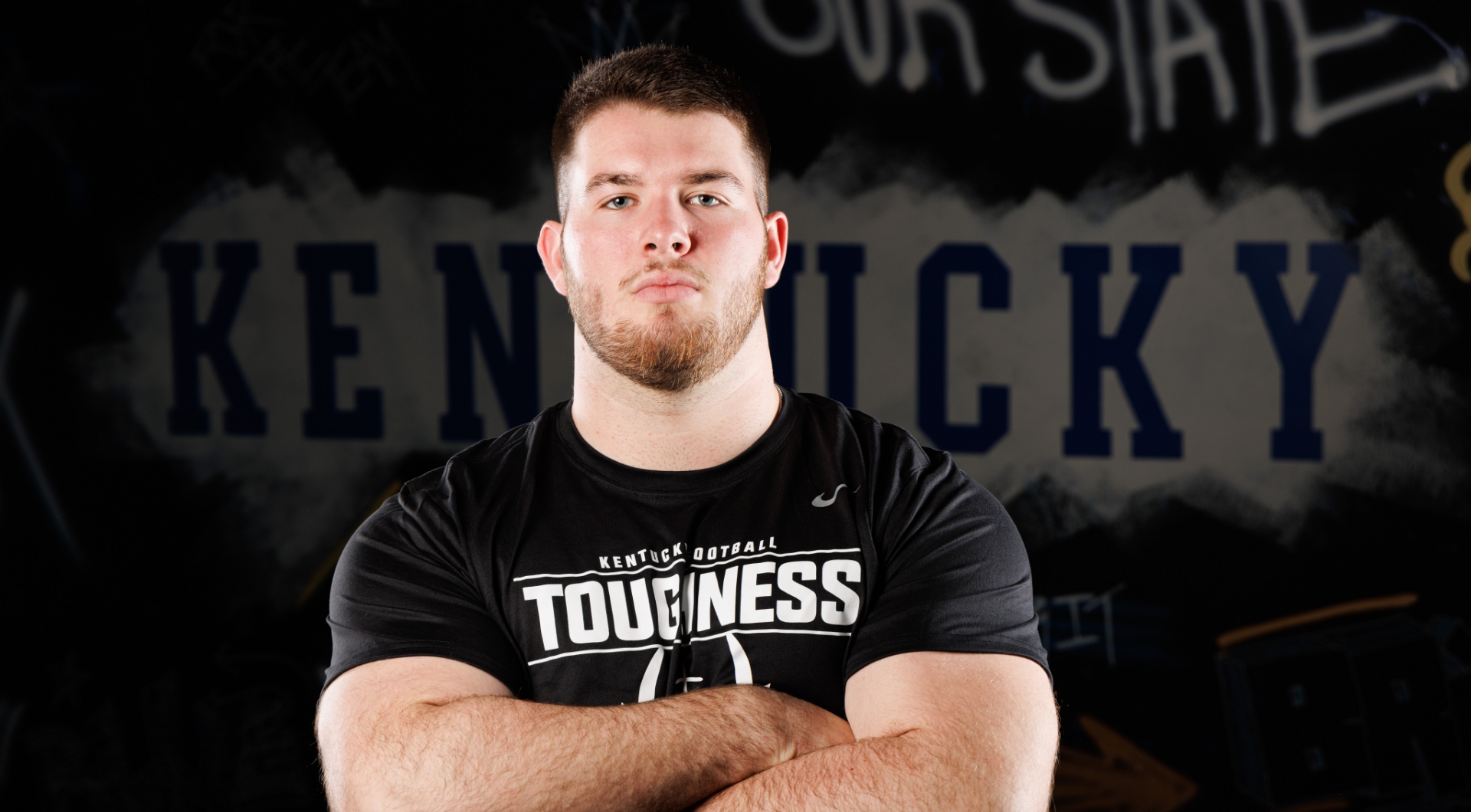
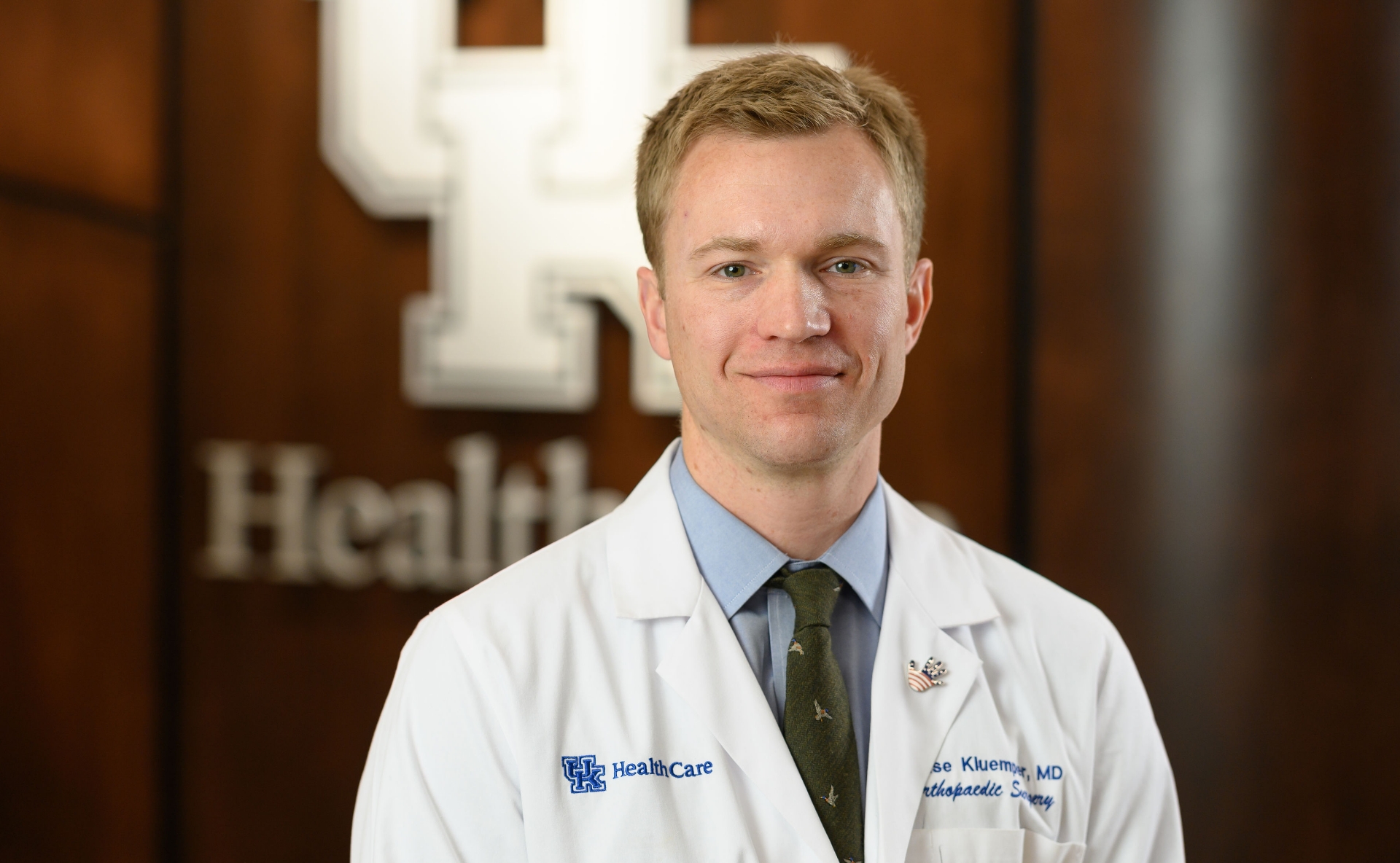
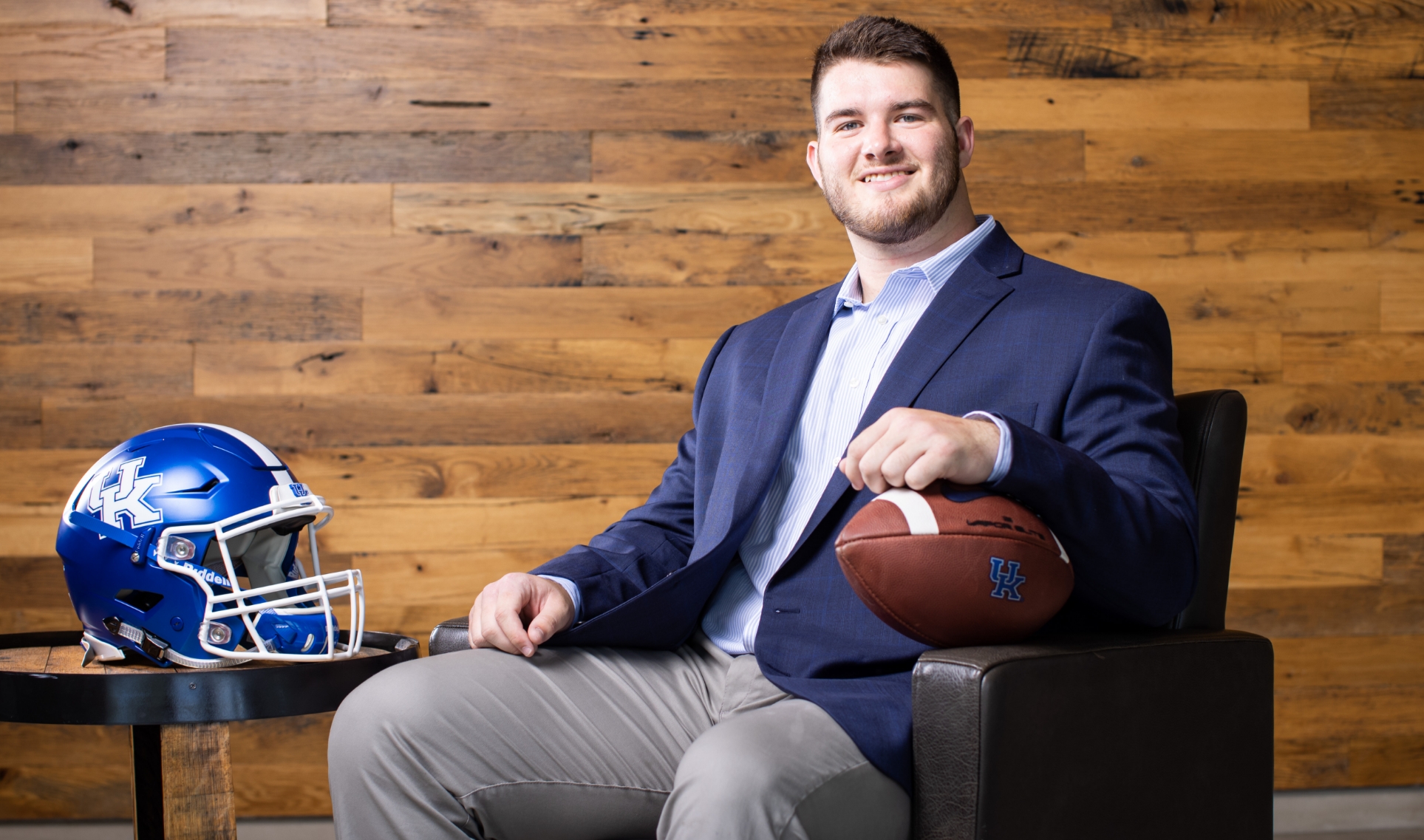
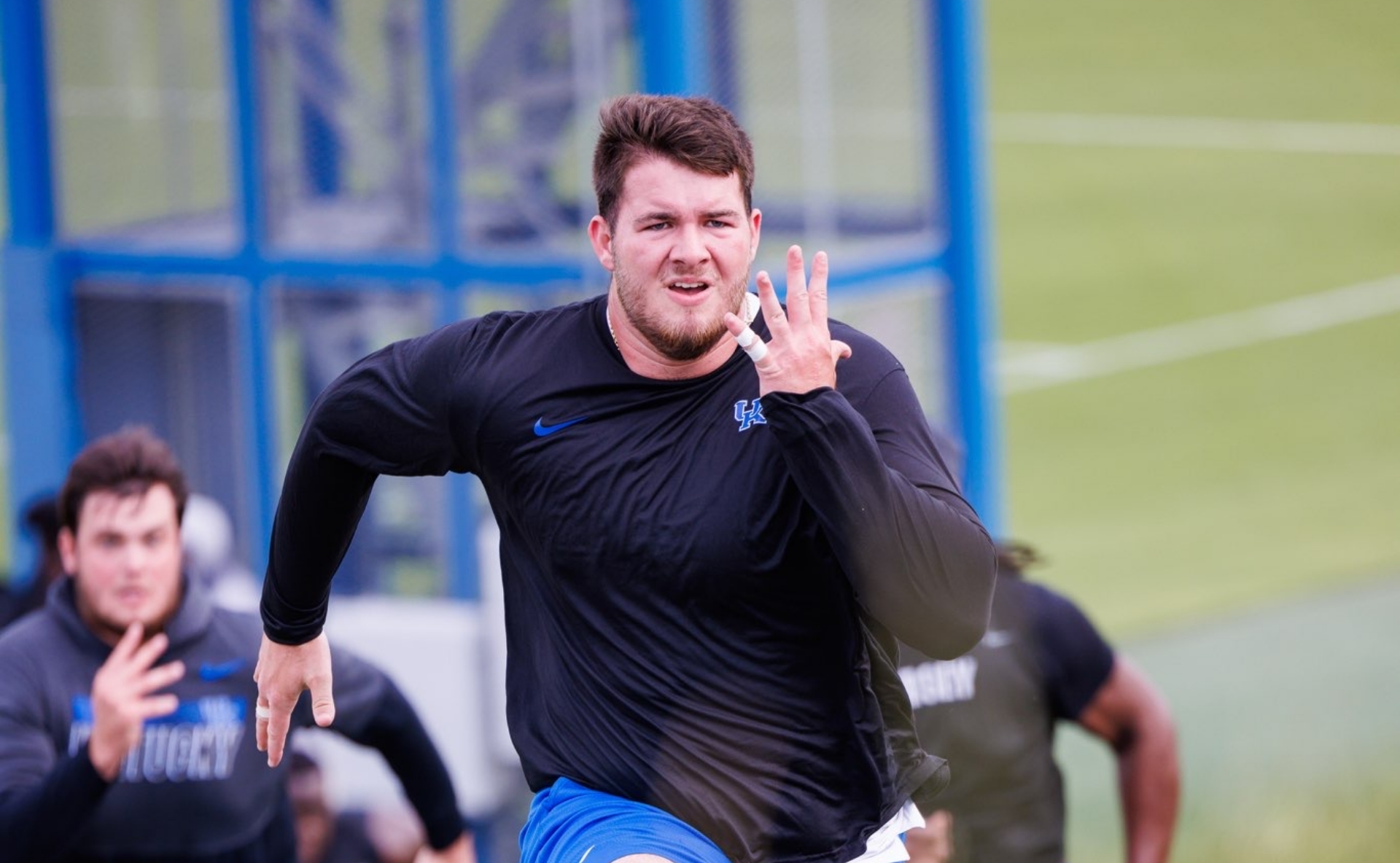
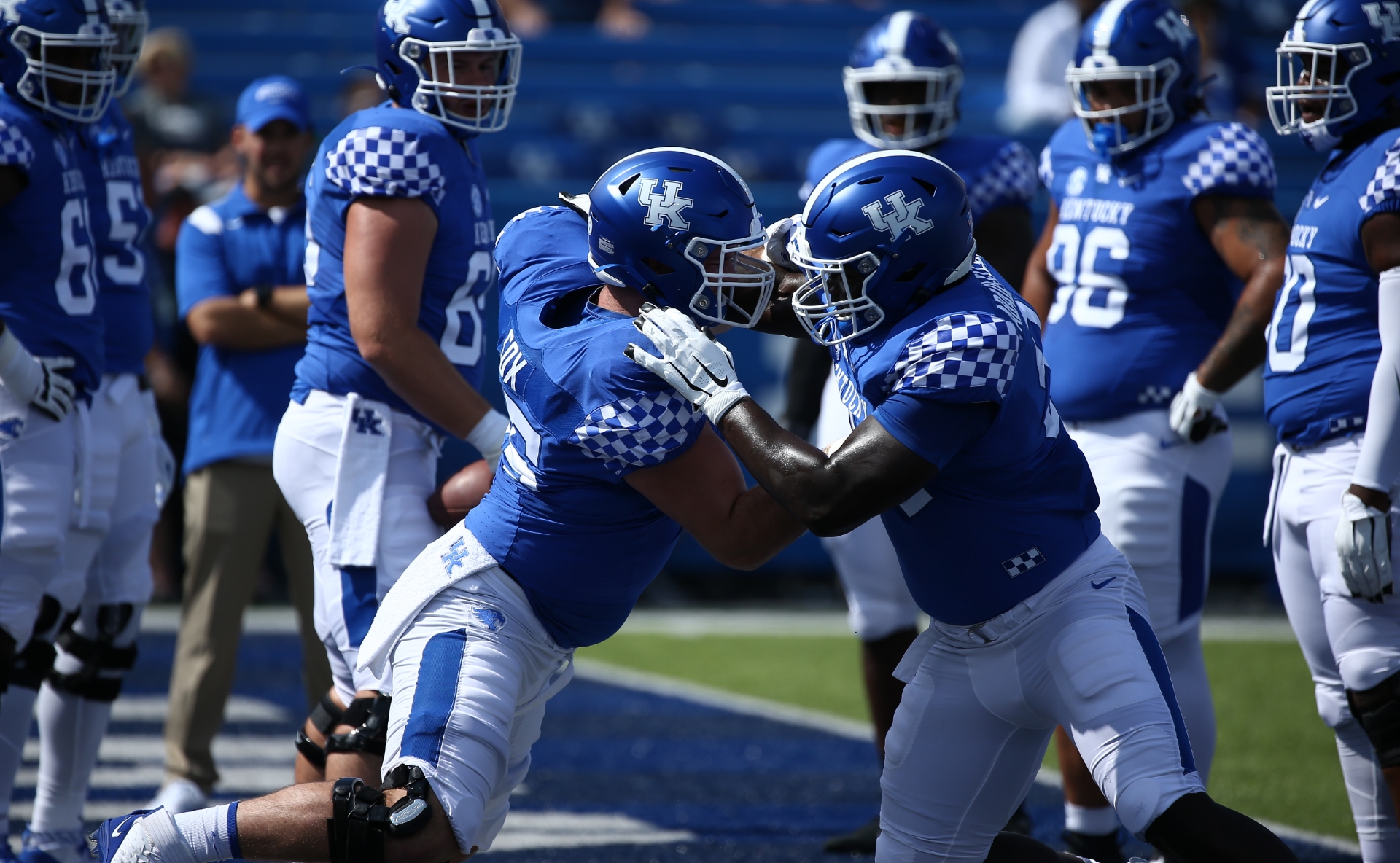

A force of nature
You wouldn’t think a pinky could take down Eli Cox.
On the field, he’s relentless. The 6’4”, 293-pound Wildcats offensive guard was named a midseason All-American and SEC Offensive Lineman of the Week in his sophomore season. But in the first half of a game against Tennessee, a seemingly minor finger injury ended his season—and threatened the future of his football career.
“I was doing a pass block and I had grabbed onto the defender,” Eli said. “He went to make an inside move and as I pulled him back—he was pulling away and it just snapped my finger out. When I went to tighten my chin strap, it was like my pinky was stuck in the air. It wouldn’t move. And I thought at the time maybe I dislocated it.”
The team trainer taped his fingers together and Eli finished the game, then got an x-ray that showed no broken bones. “We scheduled an MRI at the hospital on Sunday morning. That’s where they confirmed the tendon was torn.”
“[Eli] puts a lot of force through his fingers. He is like a force of nature in terms of the amount he is generating through the flexor tendons of his fingers,” said Dr. Chase Kluemper, an orthopaedic surgeon at the UK HealthCare Hand Center. “There are two tendons that flex the finger and they curl the finger down into the palm. He ripped one of them off the bone, and it takes a significant amount of force to do that.”

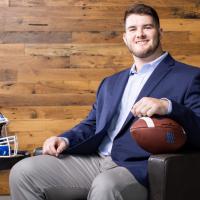
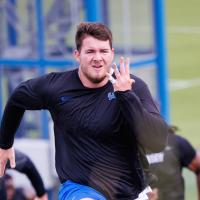
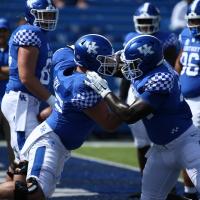
One of the benefits of the UK HealthCare Hand Center is their collaborative approach. Specially trained hand therapists work together with physicians and surgeons to develop a comprehensive plan for each patient, personalized to their goals. Eli’s team considered several treatment options, including strengthening the other tendons in his hand to compensate for the torn one. If it worked, Eli could potentially avoid surgery, or at least postpone it, allowing him to finish the season.
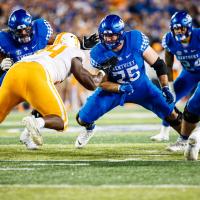
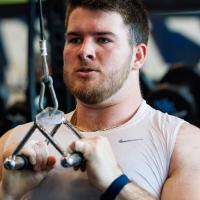
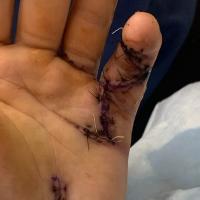
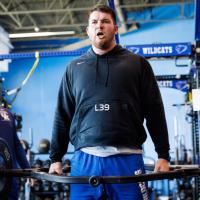
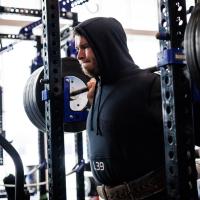

“We gave it a good effort those first four days,” said Rehab Clinical Coordinator Matt Rose. “He worked really hard. In the beginning, he had no movement in the finger at all. And we did get some, but it wasn’t enough that we considered it functional for Eli to live the rest of his life.”
“They said, if I didn’t have the surgery, you’d risk losing 75% of your grip strength and never moving your pinky again. You’d never be able to type on a computer or grip a football,” Eli said. “My left hand would be very much a liability for me. So, it was either play football at not as high a level, or have the surgery and be out for the season.”
Facing the threat of an end to his already impressive football career, Eli made the tough call to have a season-ending surgery to repair his tendon right away. It was the right decision—when Dr. Kluemper began the surgery, he discovered the injury was even worse than it appeared on the scans.
“When the tendon is pulled off the distal phalanx, which is the tip bone of your finger, usually it’s nice and clean, kind of plucked right off,” he said. A typical repair involves placing an anchor in the bone, and attaching the tendon with a few sutures. In Eli’s case, “Perhaps unsurprisingly, more energy had gone through that finger and it absolutely frayed the living daylights out of that tendon. It was shredded like the end of a mop, as opposed to being kind of a clean cut. It was totally frayed.”
The tendon had also retracted into Eli’s palm, complicating the surgery further. “We used sutures, we used an anchor, we did everything we could think of,” Dr. Kluemper said.
The procedure was a success, but for Eli, the recovery proved to be the toughest, most painful part. “It didn’t hurt really much before I had surgery, [but] there was a lot of pain involved post-surgery, obviously. The recovery process was about 14 weeks before I was able to use my hand again. Being a football player and somebody who likes to lift weights and work out and be a part of the team, it was kind of tough not to be able to work out with everybody.”
“We try to get patients with this type of injury and repair in within three to five days to get started with their rehab,” said Matt Rose. “We start with passive range of motion first, working on getting the swelling and pain down. We progressed that first week to some active motion. We also put him in a custom orthotic to protect his hand. He had a home program that he was also working with his athletic trainers. So, he was seeing me three times a week, and he was seeing the trainers every day.”
Eli was determined to be back in playing shape by the time the Wildcats began spring workouts—no small feat when it comes to an injury like the one he’d sustained.
“He worked extremely hard,” said Matt Rose. “And that’s the key with any type of hand injury: you’ve got to be committed to the plan and you’ve got to do your exercises. He did everything that he was supposed to. I’m a season ticketholder and there was a game or two where I saw him down there doing his exercises on the sidelines.”
“One of Eli’s teammates told me they’d been calling him ‘Big Pinky,’” Dr. Kluemper said. “He’s this big strong guy and he’s got his little pinky finger all wrapped up and that made him miss a season. Even though they seem inconsequential, the little finger is particularly useful for grip strength, and he is the poster child for needing grip strength. That’s what will get him paid on Sundays if he goes to the NFL, and certainly is paying for his college right now.”
Now, Eli’s back at work and feeling totally recovered, thanks to his hard work and dedication—and his team at UK HealthCare.
“They took really good care of me,” he said. “Dr. Kluemper was forthright and honest about how the surgery was going to go. He was very upfront with the recovery and making sure we didn’t rush anything, and I didn’t have any setbacks. Matt Rose and the team at the Hand Center took their time and were able to push me. They knew I’m not someone who just needs to be able to go back to work typing at a computer. I’ve got to go move 300-pound people. They kept me on track and helped me keep my spirits up. I really appreciate everything they did for me.”






